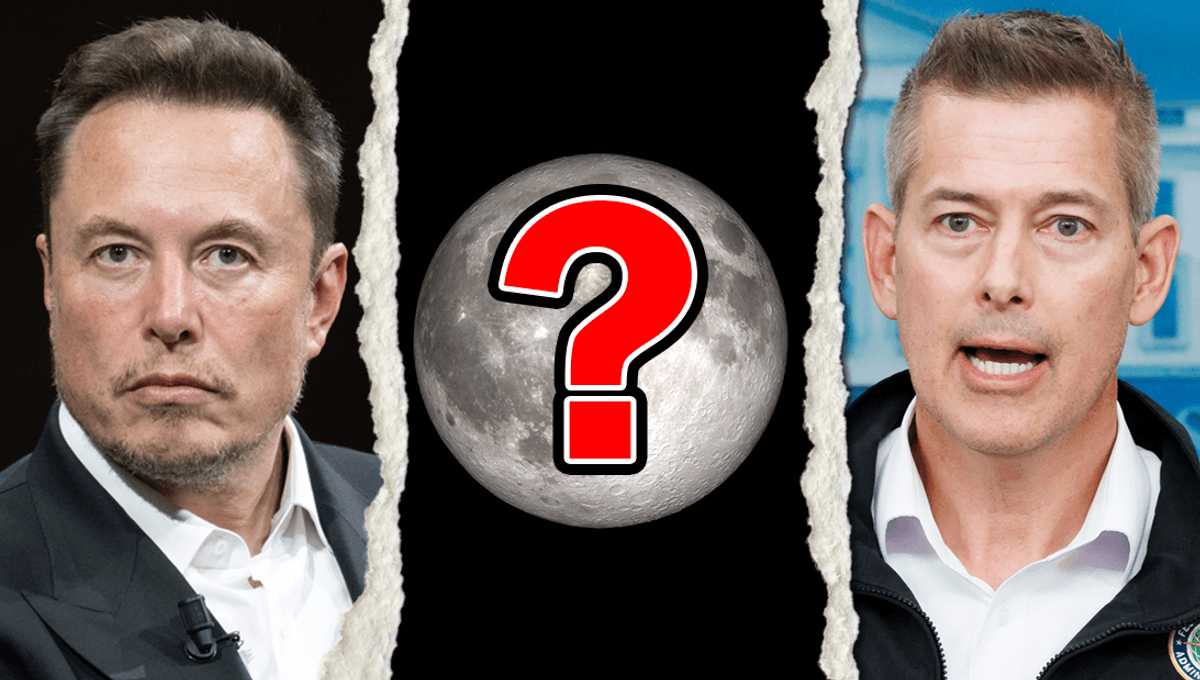
NASA’s Artemis III is going to take humanity back to the Moon in the middle of 2027. The Orion spacecraft, launched on the Space Launch System, will rendezvous with SpaceX Starship in lunar orbit. Two astronauts will board Starship and fly down to the Moon. At least, that is the plan – but it is highly doubtful that this scenario will actually happen, amid a public feud between SpaceX CEO Elon Musk and acting NASA administrator, transport secretary, and former Fox News host Sean Duffy.
It is repeated like a mantra that space is difficult, and it is even more so to do it with the safety we now expect from NASA. Artemis is not Apollo; the goal is going back to the Moon to stay, and that requires a lot more effort. That and the requirements for this important mission have already led to multiple delays.
The Moon landing was first envisioned to happen in 2024, then this year, and then it was postponed to next year. At the end of 2024, a mid-2027 date was agreed, but an analysis published over a year ago by the Government Accountability Office suggested that the Moon landing mission was likely to be pushed back until 2028.
A crucial reason for the delay has been SpaceX’s beleaguered Starship. There were multiple explosions of the vehicle over the last several tests, and while the most recent was a success, it is still behind schedule. According to their original plan, the spacecraft should have already demonstrated safe landing as well as refueling capabilities in space by now.
“The large-scale, Starship-to-Starship, cryogenic propellant transfer is a critical capability necessary for the Starship human landing system mission for Artemis III and Artemis IV,” a NASA spokesperson told IFLScience last year. SpaceX did not respond.
“The propellant transfer test is part of a series of tests, along with detailed design reviews, that will provide NASA data and evidence to certify the lander. Following the propellant transfer demonstration, NASA will review the test results and certify lander systems prior to the crewed demonstration missions to ensure astronaut safety and mission success.”
Among these delays, Duffy went on TV to announce that NASA is looking for new partners for Artemis III in an attack on the delays from SpaceX. “[SpaceX and Musk] push their timelines out, and we’re in a race against China,” Duffy told CNBC’s “Squawk Box” this week. “So, I’m going to open up the contract. I’m going to let other space companies compete with SpaceX.”
Until the summer, Elon Musk was part of the Trump administration, and his Department oversaw the administration’s proposed budget that would devastate NASA’s multiple science programs. The budget asked for a short-term increase in funding for human spaceflight, but made it clear that the Space Launch System and Orion Spacecraft will be cancelled in the future. This would force NASA to rely exclusively on private companies to get to the Moon and then Mars. Currently, there is no company that has the ability to do that.
Following the interview, Musk lobbed school-yard insults at Duffy (calling him “Sean Dummy”) and saying that: “The person responsible for America’s space program can’t have a 2 digit IQ.” Duffy retorted that “great companies shouldn’t be afraid of a challenge.” The most likely candidate to take over is Jeff Bezos’ Blue Origin, which has already got a contract for future Artemis missions.
A crucial question remains: the timeline. While Starship is certainly not ready yet, it is not like Blue Origin’s Blue Moon lander has been tested extensively and is ready to be deployed. The Blue Moon human lander is scheduled to be ready for 2030 and Artemis V. It is unclear if the timeline can be pushed by two and a half years to match the original plan for Artemis III.
The Trump administration sees the Chinese plans for the Moon, which roughly mirror the Artemis plans, as a threat. China plans to land taikonauts on the Moon by 2030 and has conducted several successful tests this summer of their new rocket and lunar lander. Duffy wants the Moon landing to happen during the Trump administration, so before January 20, 2029 – the day of the next US presidential inauguration.
With three and a half years to go, it is certainly possible to make the Moon landing happen, but there is a big caveat. Things need to go right. SpaceX or Blue Origin, or another commercial partner needs to be able to pass all the tests and hit all the targets. Also crucial will be the experience of Artemis II, the first crewed Artemis mission, which will take four astronauts – Reid Wiseman, Victor Glover, Christina Koch, and Jeremy Hansen – around the Moon for the first time in over five decades.
Source Link: NASA Vs. Elon Musk: Is A Moon Landing This Decade Off The Cards?